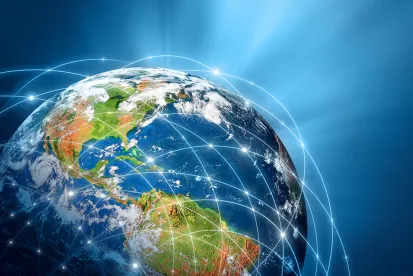Enacted in August of 2022, the Inflation Reduction Act (IRA) was heralded by many as a landmark climate legislation in the United States. While the IRA’s tax credits for electric vehicles (EV) were among its most anticipated benefits, the tax credits that ultimately materialized have various unanswered questions that may pose challenges to an industry still dependent on a global supply chain.
Therefore, this alert focuses on the implications of the IRA on the global supply chain and their interplay with longstanding US trade rules.
Background
From a supply chain perspective, the new requirements for the Clean Vehicle tax credit include North American final assembly and sourcing restrictions on EV battery components and critical minerals. In addition, starting in 2024, vehicles cannot have any battery components sourced from a foreign entity of “concern,” which includes China. And, starting in 2025, EV batteries cannot have any critical minerals sourced from a foreign entity of concern, which includes China.
More details on these credits can be found here.
What We Know So Far
-
The US Treasury Department and the Internal Revenue Service have been tasked with the IRA’s rule-writing. The IRA requires certain “proposed rules” to be published by March 2023.
-
In January 2023, the Treasury Department published its “first thoughts” to begin the process of IRA implementation, particularly for Section 30D – “Anticipated Direction of Forthcoming Proposed Guidance on Critical Minerals and Battery Component Calculations for the New Clean Vehicle Credit.”
-
Much of the clarifying guidance for the production incentives and credit provided by Section 45X has yet to be released.
-
Key US trade partners have voiced strong concerns in regard to these production credits and other provisions. The European Union has stated that “[w]e are deeply concerned with the domestic content and local assembly requirements in the current proposed text of the [IRA] electric vehicle tax credit.”
Lingering Questions
The devil still resides in the fine print. For companies with cross-border operations, the IRA rules and definitions will be important to watch. For instance:
-
How will “final assembly” in the IRA’s North American requirement be interpreted?
-
How will the global supply chain for electric vehicles, as currently constructed, satisfy the new critical minerals and battery component requirements, including minimum North American and/or US trade partner sourcing percentage thresholds?
-
If most EVs rely on the Chinese battery supply chain to some extent, will it be possible for any EVs to be eligible for the consumer EV credit? If not, is there any wiggle room for the Treasury to promulgate rules to allow for some form of transition or delay?
-
Will the IRA’s North American production and sourcing requirements align or differ from the US commitments with the United States-Mexico-Canada Agreement (USMCA), World Trade Organization, and other trade agreements?
-
Will US trade partners launch trade actions against the United States based on the IRA?
EV assemblers and parts suppliers who must rely on the global supply chain will need to find bridge solutions to remain competitive. For example, strategic application of USMCA regional value content rules provide a unique and competitive opportunity for many companies. Even companies seeking to benefit from the provisions of Section 45X will need to understand the trade rules, as many materials used in Section 45X-eligible production require importation.







 />i
/>i

